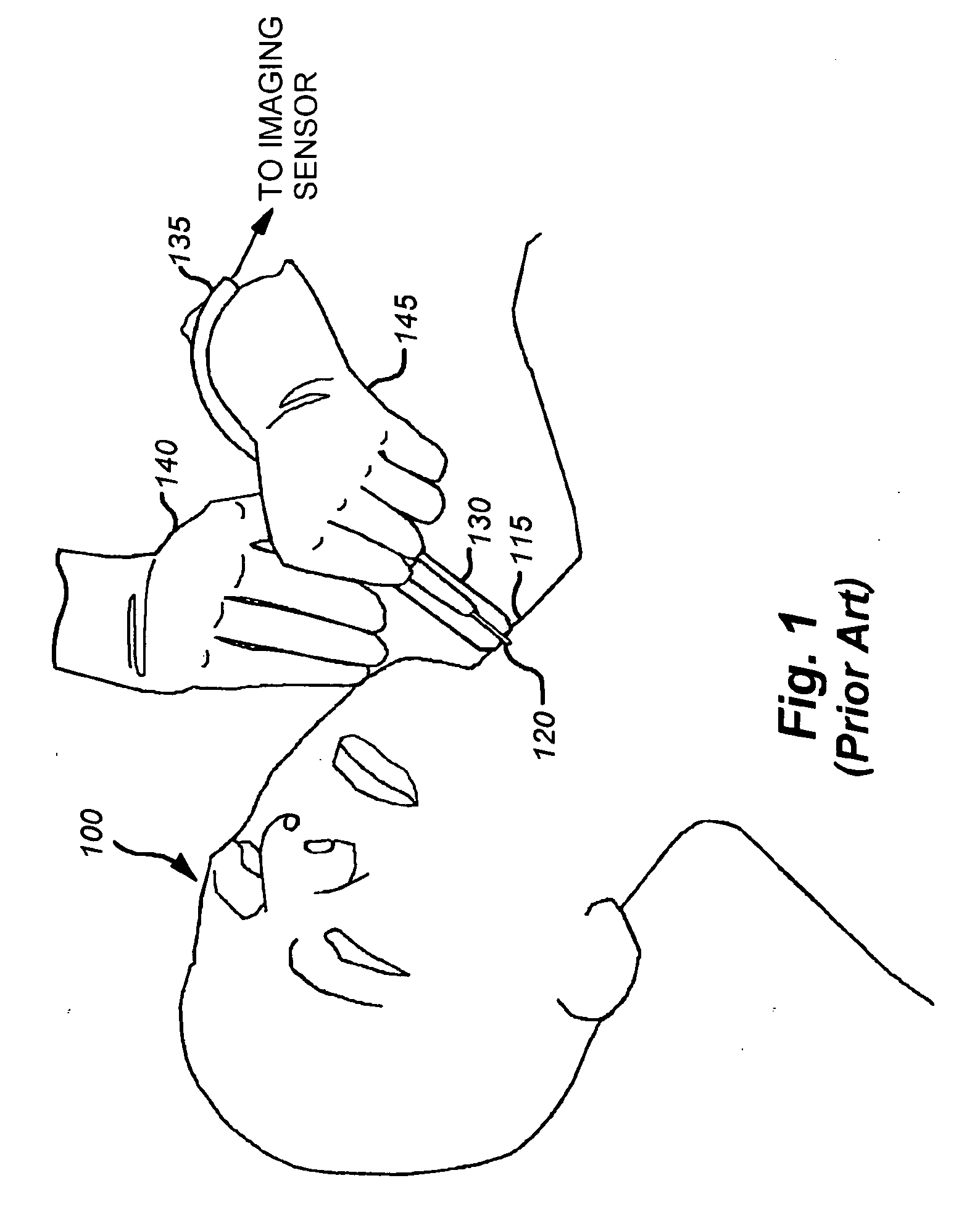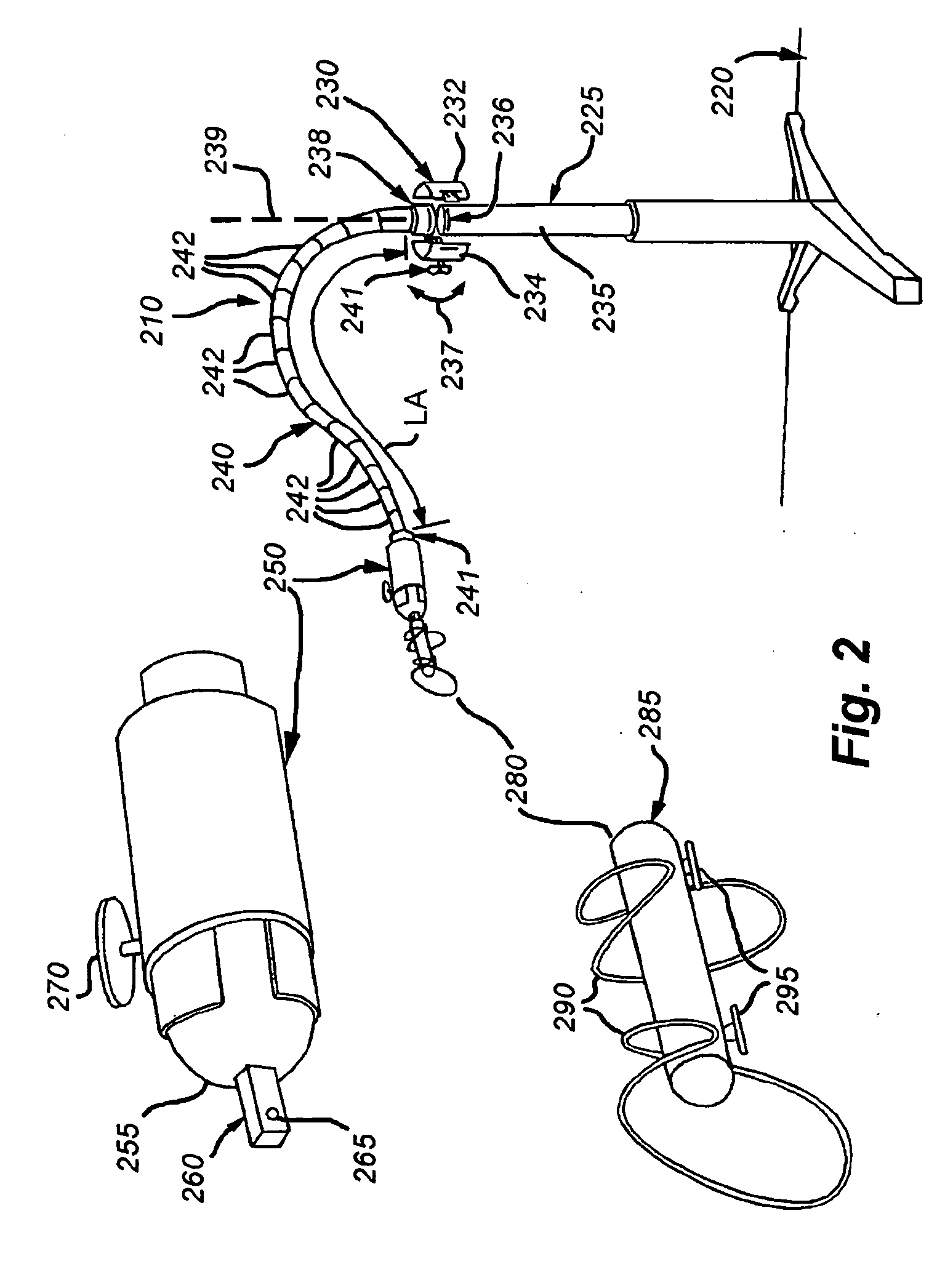Biomedical positioning and stabilization system
a positioning system and biomedical technology, applied in the field of medical devices, can solve the problems of significant failure rate, inability to contribute to the major goal of the surgical procedure, and left unsupported, and achieve the effects of increasing segment-to-segment friction, reducing labor intensity, and great flexibility
- Summary
- Abstract
- Description
- Claims
- Application Information
AI Technical Summary
Benefits of technology
Problems solved by technology
Method used
Image
Examples
Embodiment Construction
A. Overview and Operation of an Embodiment
[0068] An illustrative embodiment of an apparatus or device for supporting, positioning and stabilizing diagnostic or therapeutic devices is shown in FIG. 2. The overall support device 210 is shown resting atop a rigid, generally flat surface 220 (e.g. a treatment room floor), and is securely mounted to a conventional stand 225, using an illustrative clamping subsystem 230. In this embodiment, the exemplary stand 225 is one normally employed for delivery of intravenous (IV) fluids. However, as described further below, a variety of base units can be used to elevate and suspend the support apparatus of this invention. For example, the support device 210 may alternatively be affixed to other stable or metastable devices or equipment for the duration of the procedure. These may include, but are not limited to, rigid attachment to a hospital bed, backboard, equipment table, or ceiling fixture (see below).
[0069] The clamping subsystem 230, in thi...
PUM
 Login to View More
Login to View More Abstract
Description
Claims
Application Information
 Login to View More
Login to View More - R&D
- Intellectual Property
- Life Sciences
- Materials
- Tech Scout
- Unparalleled Data Quality
- Higher Quality Content
- 60% Fewer Hallucinations
Browse by: Latest US Patents, China's latest patents, Technical Efficacy Thesaurus, Application Domain, Technology Topic, Popular Technical Reports.
© 2025 PatSnap. All rights reserved.Legal|Privacy policy|Modern Slavery Act Transparency Statement|Sitemap|About US| Contact US: help@patsnap.com



